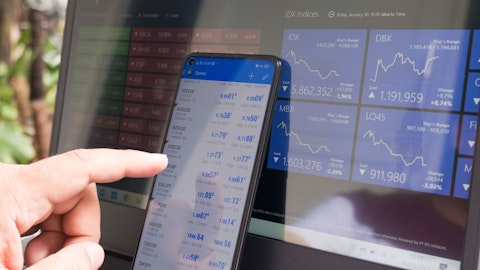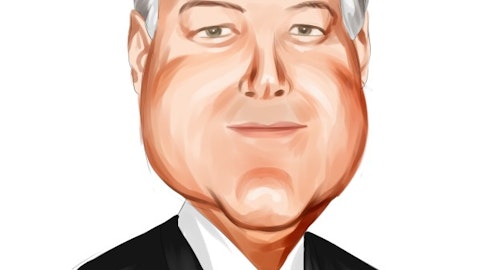So, the way I think about that is our portfolio is just very well positioned in this environment. We are in the right industries. We have companies that produce free cash flow, and we have companies that are still growing even though the economy is spotty in certain sectors. And so it’s a metric that we feel comfortable about. And really €“ I really think about that $1.6 billion as being an accurate metric for the vast majority of our portfolio and really all of our green names.
Ryan Lynch: Okay. That’s helpful. And then the last question I had was you mentioned the $90 million of unsecured notes repaid in January. You guys have about $257 million of total maturities coming due in 2023. I believe you said you guys have the available liquidity when I look on the availability on your credit facilities, there is enough to cover that. But it does start to get €“ it feels like a little tighter from after that point on available capital, remaining under credit facilities. Is the €“ are you guys anticipating repaying these unsecured notes by just drawing on the credit facilities throughout the year? And do you feel that you would draw on the credit facilities to repay these unsecured notes. Do you feel like you guys have to €“ not you guys would be forced to expand the credit facility, but would you like to expand the commitments on the credit facility to give you guys more buffer going forward?
Steve Klinsky: Yes. I think we €“ so for the rest of the year, we have about $160 million, $170 million coming due. We have sufficient availability under the credit facilities currently to deal with that. So, we feel good, at least we are not rushed to do something unnatural from a financing perspective. But we are still looking at unsecured debt. We might potentially do something else there to replace that debt, we could back leverage draw down on the facilities, pay down the debt when they come due and lever up again when the environment is better. So, I think we are continuously looking at both the secured and unsecured market to see what’s available to us. But we feel comfortable at least we have enough availability currently on the revolvers to take care of what we need to this year.
Robert Hamwee: I also might add one other thing, which is that while it’s obviously not the most robust environment for repayments, we do expect to have some repayments come through. And we are €“ given the earnings profile that we are demonstrating now, we feel we can use some of those repayments to just modestly de-lever a little bit, and that’s another source of funds to address near-term repayments as well as to address this overall liquidity position. So, I don’t want to lose sight of that as another important arrow in the quiver.
Ryan Lynch: Okay. Understood. I appreciate the time today.
John Kline: Thanks Ryan. Appreciate the questions.
Operator: This will conclude our question-and-answer session. Pardon me. Our next question comes from Art Winston with Bank of America €“ pardon me, Derek Hewett with Bank of America. Please go ahead.
Derek Hewett: Good morning everyone. Could you talk a little bit more about the supplemental dividend? Is there any sort of governor so that if you were in a situation where you had some unrealized losses and book value went lower, would that impact the calculation for the supplemental dividend?
John Kline: Hi Derek, this is John. Thanks for the question. So, we chose to enact our variable supplemental dividend using effectively just one prong where we take, as Steve mentioned, 50% of the over earnings, and we pay that 50% out in terms of €“ in the special in the supplement variable €“ supplemental dividend. And then the other 50% would go to stay within the company and increase book value. And so we did not have a second prong to that test. And the reason that we didn’t do that is, I guess two-fold. One, is we wanted this dividend to be easily modeled by our shareholders and the analysts that follow us. And we also feel like mark-to-market changes don’t necessarily affect our dividend policy or our ability to pay the dividend. The ability to pay the dividend is more affected by real non-accruals and losses, which is a little bit separate. So, we have confidence in our book, and we want to keep it very simple.





